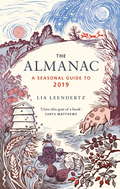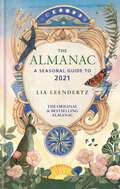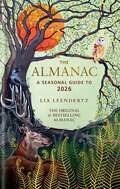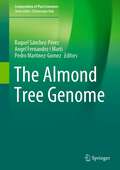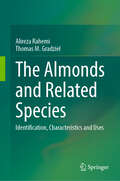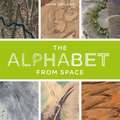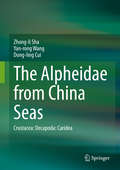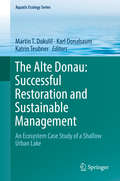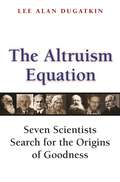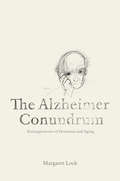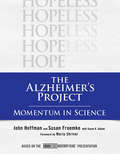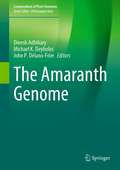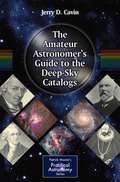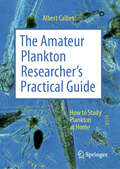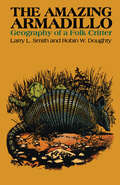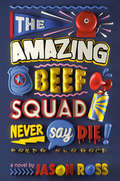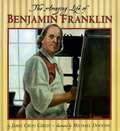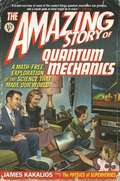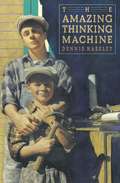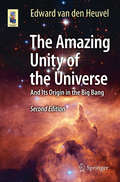- Table View
- List View
The Almanac: A Seasonal Guide to 2019
by Lia LeendertzTHE ORIGINAL & BESTSELLING ALMANAC 'I love this gem of a book' - Cerys Matthews 'This book is your bible' - The Independent '...it already feels like an annual necessity' - India Knight'Joyous' - Allan Jenkins'Updated for 2019 with more lovely ideas to celebrate the seasons' - Gardens Illustrated'A charming book. This is a real gem of a gift' - Sunday Express, S Magazine. A perfect toolkit connecting with the world around us and the year ahead as it unfolds - all in a compact and pocket size that just begs you to pick it up and browse - Reckless Gardener or Its range of information and depth of understanding of our seasons is priceless - Reckless GardenerThe Almanac: A Seasonal Guide to 2019 reinvents the tradition of the rural almanac for a new audience. It gives you the tools and inspiration you need to celebrate, mark and appreciate each month of the year in your own particular way. Divided into the 12 months, a set of tables each month gives it the feel and weight of a traditional almanac, providing practical information that gives access to the outdoors and the seasons, perfect for expeditions, meteor-spotting nights and beach holidays. There are also features on each month's unique nature, such as the meteor shower of the month, beehive behaviour, folklore and stories, seasonal recipes and charts tracking moon phases and tides. Why not try identifying trees by their bare buds in January; Enjoy Buttermilk scones with orangle blossom & honey butter in June; Discover the Chinese New Year story of 'The great race' in February.You will find yourself referring to the almanac all year long, revisiting it again and again, and looking forward to the next edition as the year draws to a close.Praise for The Almanac: A Seasonal Guide to 2018:'The perfect companion to the seasons' - India Knight'A richly layered book of events, celebrations and everyday information that together create a beautiful, fascinating resource . . . In the single month I've had my hands on it, the book has quietly "worked".' - Telegraph'Beautifully written, this pocket-sized guide is a labour of love and will remind you to appreciate little moments throughout the year.' - Gardens Illustrated'Elegant . . . an ideal stocking filler.' - The English Garden
The Almanac: A Seasonal Guide to 2021
by Lia Leendertz'The perfect companion to the seasons' - India KnightWelcome to The Almanac: A Seasonal Guide to 2021. If you are new to The Almanac then welcome; if you are a regular reader then hello! The Almanac is about celebrating the unfolding year in all its various facets. The old dependables which I include every year are back: moon phases, sun rises and sets, tide time tables and the sky at night. As ever there are seasonal recipes and monthly gardening tips for the flower and vegetable garden too, as well as a bit of folklore, and nature and a song for each month.This year's edition has a theme: movement, migration and pilgrimage. This was not a reaction to the unsettling events of last year - it was half written by the time Covid-19 hit - but writing it from lockdown did give me a heightened appreciation of the way in which Britain and Ireland have always and continue to be places of movement, and are intimately connected to the rest of the world. You will find within this book migration tales for each month of this year, but I have also searched out seasonal tales of human movement, and included a pilgrimage for each month, some ancient, some current, all underlining the spiritual benefits of putting one foot in front of the other. Every month I have included a method of navigating using the stars, sun or moon, so you can find your way around in the dark (or just look out of your window and know where south is). And our monthly folk songs are all shanties this year, work songs with movement at their very heart, created to coordinate muscle power to drive sailing ships backwards and forwards across the Atlantic Ocean, and containing influences from the eastern seaboard of the US down to the Caribbean and beyond mixed with British and Irish folk traditions. These songs are stitched through with movement and travel, as is this Almanac.PRAISE FOR THE ALMANAC: A SEASONAL GUIDE'This book is your bible' - The Independent'An ideal stocking filler' - The English Garden'I love this gem of a book' - Cerys Matthews'Indispensable' - Sir Bob Geldof'An uplifting nature-inspired guide' - Country & Town House magazine
The Almanac: A Seasonal Guide to 2021
by Lia Leendertz'The perfect companion to the seasons' - India KnightWelcome to The Almanac: A Seasonal Guide to 2021. If you are new to The Almanac then welcome; if you are a regular reader then hello! The Almanac is about celebrating the unfolding year in all its various facets. The old dependables which I include every year are back: moon phases, sun rises and sets, tide time tables and the sky at night. As ever there are seasonal recipes and monthly gardening tips for the flower and vegetable garden too, as well as a bit of folklore, and nature and a song for each month.This year's edition has a theme: movement, migration and pilgrimage. This was not a reaction to the unsettling events of last year - it was half written by the time Covid-19 hit - but writing it from lockdown did give me a heightened appreciation of the way in which Britain and Ireland have always and continue to be places of movement, and are intimately connected to the rest of the world. You will find within this book migration tales for each month of this year, but I have also searched out seasonal tales of human movement, and included a pilgrimage for each month, some ancient, some current, all underlining the spiritual benefits of putting one foot in front of the other. Every month I have included a method of navigating using the stars, sun or moon, so you can find your way around in the dark (or just look out of your window and know where south is). And our monthly folk songs are all shanties this year, work songs with movement at their very heart, created to coordinate muscle power to drive sailing ships backwards and forwards across the Atlantic Ocean, and containing influences from the eastern seaboard of the US down to the Caribbean and beyond mixed with British and Irish folk traditions. These songs are stitched through with movement and travel, as is this Almanac.PRAISE FOR THE ALMANAC: A SEASONAL GUIDE'This book is your bible' - TheIndependent'An ideal stocking filler' - The English Garden'I love this gem of a book' - Cerys Matthews'Indispensable' - Sir Bob Geldof'An uplifting nature-inspired guide' -Country & Town House magazine
The Almanac: A Seasonal Guide to 2026 (Almanac)
by Lia LeendertzThe original and bestselling almanacReconnect with the seasons in Britain and Ireland with this month-by-month guide to the world around us - including tide tables, sunrises and moon phases; wildlife and folklore; seasonal recipes and more.The Almanac: A Seasonal Guide to 2026 gives you the tools and inspiration you need to celebrate, mark and appreciate each month of the year in your own particular way.Divided into the 12 months, a set of tables each month gives it the feel and weight of a traditional almanac, providing practical information that gives access to the outdoors and the seasons, perfect for expeditions, woodland foraging and beach holidays. And it's the ideal gift!You will find yourself referring to The Almanac all year long, revisiting it again and again, and looking forward to the next edition as the year draws to a close.PRAISE FOR THE ALMANAC:'Lia Leendertz's classic almanac never fails to delight' - The Herald'It's a perfect Christmas present' - Allan Jenkins, The Observer'The perfect companion to the seasons' - India Knight'Indispensable' - Sir Bob Geldof'This book is your bible' - The Independent'I love this gem of a book' - Cerys Matthew
The Almanac: A Seasonal Guide to 2026 (Almanac)
by Lia LeendertzThe original and bestselling almanacReconnect with the seasons in Britain and Ireland with this month-by-month guide to the world around us - including tide tables, sunrises and moon phases; wildlife and folklore; seasonal recipes and more.The Almanac: A Seasonal Guide to 2026 gives you the tools and inspiration you need to celebrate, mark and appreciate each month of the year in your own particular way.Divided into the 12 months, a set of tables each month gives it the feel and weight of a traditional almanac, providing practical information that gives access to the outdoors and the seasons, perfect for expeditions, woodland foraging and beach holidays. And it's the ideal gift!You will find yourself referring to The Almanac all year long, revisiting it again and again, and looking forward to the next edition as the year draws to a close.PRAISE FOR THE ALMANAC:'Lia Leendertz's classic almanac never fails to delight' - The Herald'It's a perfect Christmas present' - Allan Jenkins, The Observer'The perfect companion to the seasons' - India Knight'Indispensable' - Sir Bob Geldof'This book is your bible' - The Independent'I love this gem of a book' - Cerys Matthew
The Almanac: THE SUNDAY TIMES BESTSELLER (Almanac)
by Lia LeendertzTHE ORIGINAL & SUNDAY TIMES BESTSELLING ALMANAC Reconnect with the seasons in Britain and Ireland with this month-by-month guide to the world around us - including key dates, tide tables and garden tasks; constellations and moon phases; sunrises, folk songs, seasonal recipes plus a 'bun of the month'; and - because 2023 will be a good year for planet spotting - the solar system and the zodiac.The Almanac: A Seasonal Guide to 2023 gives you the tools and inspiration you need to celebrate, mark and appreciate each month of the year in your own particular way. Divided into the 12 months, a set of tables each month gives it the feel and weight of a traditional almanac, providing practical information that gives access to the outdoors and the seasons, perfect for expeditions, meteor-spotting nights and beach holidays. There are also features on each month's unique nature, with this instalment following the swirling micro world of the garden pond through the year.You will find yourself referring to The Almanac all year long, revisiting it again and again, and looking forward to the next edition as the year draws to a close.This year's edition is illustrated by artist Whooli Chen.The geographical scope of The Almanac is Britain and IrelandPRAISE FOR THE ALMANAC:'Lia Leendertz's classic almanac never fails to delight' - The Herald'It's a perfect Christmas present' - Allan Jenkins, The Observer'The perfect companion to the seasons' - India Knight'Indispensable' - Sir Bob Geldof'This book is your bible' - The Independent'I love this gem of a book' - Cerys Matthews
The Almanac: THE SUNDAY TIMES BESTSELLER (Almanac)
by Lia LeendertzTHE ORIGINAL & SUNDAY TIMES BESTSELLING ALMANAC Reconnect with the seasons in Britain and Ireland with this month-by-month guide to the world around us - including key dates, tide tables and garden tasks; constellations and moon phases; sunrises, folk songs, seasonal recipes plus a 'bun of the month'; and - because 2023 will be a good year for planet spotting - the solar system and the zodiac.The Almanac: A Seasonal Guide to 2023 gives you the tools and inspiration you need to celebrate, mark and appreciate each month of the year in your own particular way. Divided into the 12 months, a set of tables each month gives it the feel and weight of a traditional almanac, providing practical information that gives access to the outdoors and the seasons, perfect for expeditions, meteor-spotting nights and beach holidays. There are also features on each month's unique nature, with this instalment following the swirling micro world of the garden pond through the year.You will find yourself referring to The Almanac all year long, revisiting it again and again, and looking forward to the next edition as the year draws to a close.This year's edition is illustrated by artist Whooli Chen.The geographical scope of The Almanac is Britain and IrelandPRAISE FOR THE ALMANAC:'Lia Leendertz's classic almanac never fails to delight' - The Herald'It's a perfect Christmas present' - Allan Jenkins, The Observer'The perfect companion to the seasons' - India Knight'Indispensable' - Sir Bob Geldof'This book is your bible' - The Independent'I love this gem of a book' - Cerys Matthews
The Almond Tree Genome (Compendium of Plant Genomes)
by Pedro Martínez-Gómez Raquel Sánchez-Pérez Ángel Fernández i MartíThis book brings together the latest information on almond genomics and transcriptomics, with a particular focus on cutting-edge findings, tools, and strategies employed in genome sequencing and analysis with regard to the most important agronomic traits. Cultivated almond [(Prunus dulcis (Miller) D. A. Webb, syn. Prunus amygdalus Batsch., Amygdalus communis L., Amygdalus dulcis Mill.)] is a tree crop producing seeds of great economic interest, and adapted to hot and dry climates. Domesticated in Southeast Asia, its small diploid genome and phenotypic diversity make it an ideal model to complement genomics studies on peach, generally considered to be the reference Prunus species. Both represent consanguineous species that evolved in two distinct environments: warmer and more humid in the case of peach, and colder and xerophytic for almond. The advent of affordable whole-genome sequencing, in combination with existing Prunus functional genomics data, has now made it possible to leverage the novel diversity found in almond, providing an unmatched resource for the genetic improvement of this species.
The Almonds and Related Species: Identification, Characteristics and Uses
by Thomas M. Gradziel Alireza RahemiAlmond and peach species have global importance as food crops as well as use in landscaping including restoration and reforestation. Because currently available breeding germplasm has a very narrow genetic base, genetic improvement programs are turning to wild germplasm as sources of improved quality, productivity and resistance traits. This germplasm is also enabling the dramatic modification of traditional cropping systems as with the transfer of self-fruitfulness from related wild almond and peach species to normally self-sterile cultivated almond. While presence of an extensive wild almond and related germplasm has been documented in the literature over the past century, most information remains dispersed and often not generally accessible owing to its publication in treatises and journals of limited distribution. This monograph brings together a comprehensive characterization of almond and its related species including the cultivated and wild peaches. Because it represents the only comprehensive source of information on almond, peach and their wild relatives, it represents a basic reference text of interest to researchers in both the basic and applied plant and ecological sciences.
The Alphabet From Space
by Adam Voiland'Aloha, A! What begins with A? There is Antarctica, Azerbaijan, algal blooms, and alluvial fans. Astronauts appreciating awe-inspiring views of Earth from above. And these ancient Appalachian ridges in America intersected by an azure river in autumn!'We've all looked up at clouds and found faces, objects and animals within their white puffy shapes. Astronauts and satellites can do the same thing - but from far above in outer space...While working on a story about wildfires in northern Canada, NASA science writer and new father Adam Voiland found a stunning satellite image of an enormous smoke cloud, many miles across, shaped like the letter 'V'. The majesty of that image made Adam wonder: could he track down all 26 letters of the alphabet for his newborn baby son, using only satellite imagery and photographs of the Earth taken by astronauts? With the help of readers and colleagues at NASA, he started to collect images of clouds, blooms of sea plankton and dust storms that formed shapes reminiscent of all the letters from A to Z.The result is this beautiful book of earth imagery. It offers a unique view of the alphabet, where letters are spelled out by rivers, deserts, mountains and ice. At a time when Space travel is more popular than ever, and astronauts from Chris Hadfield to Tim Peake are inspiring a whole generation of young readers, this book is a delight for adults and children alike. It is at once a celebration of Space, language and the natural beauty of our home planet, and a gift to keep for ever.
The Alpheidae from China Seas: Crustacea: Decapoda: Caridea
by Zhong-li Sha Yan-rong Wang Dong-ling CuiAs one of the largest families within the Caridea, the Alpheidae have attracted much attention for its species richness, especially on coral reefs. The Alpheidae are one of the most abundant decapods in tropical and subtropical areas, with 48 genera and more than 700 known species. The Alpheidae present a particular challenge in terms of both taxonomy and systematics as they are difficult to identify (some species vary in their growth and there are often large differences between the sexes). Traditional, morphology-based research on the Alpheidae still plays an important role in identifying species, compared with new methods, such as the short gene sequences. Based on more than 2000 specimens collected from the China Seas, this book describes and clearly illustrates 146 species belonging to 16 genera of the Alpheidae. It also presents the key features of every genus and every species within every genus, to enable readers to easily identify the alphid shrimps of the China Seas.
The Alte Donau: Successful Restoration and Sustainable Management (Aquatic Ecology Series #10)
by Martin T. Dokulil Karl Donabaum Katrin TeubnerHere we report on a 25-year long-term sequence of measures to return a deteriorated recreational urban lake, Alte Donau in Vienna to acceptable water quality. Metropolitan waters require focused ecosystem management plans and intensive in-lake efforts. We explored physico-chemical conditions, food web from viruses to fish and water birds, the sediments, the littoral zone and the catchment, management and urban planning, and global warming. Several restoration techniques were tested and critically evaluated. The final management plan was based on bi-stable theory. During the recovery phase, numerous surplus adjustments had to be implemented to secure sustainable achievement.
The Altruism Equation: Seven Scientists Search for the Origins of Goodness
by Lee Alan DugatkinIn a world supposedly governed by ruthless survival of the fittest, why do we see acts of goodness in both animals and humans? This problem plagued Charles Darwin in the 1850s as he developed his theory of evolution through natural selection. Indeed, Darwin worried that the goodness he observed in nature could be the Achilles heel of his theory. Ever since then, scientists and other thinkers have engaged in a fierce debate about the origins of goodness that has dragged politics, philosophy, and religion into what remains a major question for evolutionary biology.The Altruism Equation traces the history of this debate from Darwin to the present through an extraordinary cast of characters-from the Russian prince Petr Kropotkin, who wanted to base society on altruism, to the brilliant biologist George Price, who fell into poverty and succumbed to suicide as he obsessed over the problem. In a final surprising turn, William Hamilton, the scientist who came up with the equation that reduced altruism to the cold language of natural selection, desperately hoped that his theory did not apply to humans.Hamilton's Rule, which states that relatives are worth helping in direct proportion to their blood relatedness, is as fundamental to evolutionary biology as Newton's laws of motion are to physics. But even today, decades after its formulation, Hamilton's Rule is still hotly debated among those who cannot accept that goodness can be explained by a simple mathematical formula. For the first time, Lee Alan Dugatkin brings to life the people, the issues, and the passions that have surrounded the altruism debate. Readers will be swept along by this fast-paced tale of history, biography, and scientific discovery.
The Altruistic Urge: Why We’re Driven to Help Others
by Stephanie D. PrestonOrdinary people can perform acts of astonishing selflessness, sometimes even putting their lives on the line. A pregnant woman saw a dorsal fin and blood in the water—and dove right in to pull her wounded husband to safety. Remarkably, some even leap into action to save complete strangers: one New York man jumped onto the subway tracks to rescue a boy who had fallen into the path of an oncoming train. Such behavior is not uniquely human. Researchers have found that mother rodents are highly motivated to bring newborn pups—not just their own—back to safety. What do these stories have in common, and what do they reveal about the instinct to protect others?In The Altruistic Urge, Stephanie D. Preston explores how and why we developed a surprisingly powerful drive to help the vulnerable. She argues that the neural and psychological mechanisms that evolved to safeguard offspring also motivate people to save strangers in need of immediate aid. Eye-catching dramatic rescues bear a striking similarity to how other mammals retrieve their young and help explain more mundane forms of support like donating money. Merging extensive interdisciplinary research that spans psychology, neuroscience, neurobiology, and evolutionary biology, Preston develops a groundbreaking model of altruistic responses. Her theory accounts for extraordinary feats of bravery, all-too-common apathy, and everything in between—and it can also be deployed to craft more effective appeals to assist those in need.
The Alzheimer Conundrum: Entanglements of Dementia and Aging
by Margaret LockWhy our approaches to Alzheimer's and dementia are problematic and contradictoryDue to rapidly aging populations, the number of people worldwide experiencing dementia is increasing, and the projections are grim. Despite billions of dollars invested in medical research, no effective treatment has been discovered for Alzheimer's disease, the most common form of dementia. The Alzheimer Conundrum exposes the predicaments embedded in current efforts to slow down or halt Alzheimer’s disease through early detection of pre-symptomatic biological changes in healthy individuals.Based on a meticulous account of the history of Alzheimer’s disease and extensive in-depth interviews, Margaret Lock highlights the limitations and the dissent associated with biomarker detection. Lock argues that basic research must continue, but should be complemented by a public health approach to prevention that is economically feasible, more humane, and much more effective globally than one exclusively focused on an increasingly harried search for a cure.
The Alzheimer's Project: Momentum in Science
by John Susan Hoffman FroemkeThis companion book to the HBO Documentary Films series explores the cutting-edge research on AlzheimerOCOs disease that is creating new hope for the future.
The Amaranth Genome (Compendium of Plant Genomes)
by Dinesh Adhikary Michael K. Deyholos John P. Délano-FrierThis book describes the development of genetic resources in amaranths, with a major focus on genomics, reverse, and forward genetics tools and strategies that have been developed for crop improvement. Amaranth is an ancient crop native to the New World. Interest in amaranths is being renewed, due to their adaptability, stress tolerance, and nutritional value. There are about 65 species in the genus, including Amaranthus caudatus L., A. cruentus L., and A. hypochondriacus L., which are primarily grown as protein-rich grains or pseudocereals. The genus also includes major noxious weeds (e.g., A. palmeri). The amaranths are within the Caryophyllales order and thus many species (e.g., A. tricolor) produce red (betacyanin) or yellow (betaxanthin) betalain pigments, which are chemically distinct from the anthocyanins responsible for red pigmentation in other plants. A. hypochondriacus, which shows disomic inheritance (2n = 32; n= 466 Mb), has been sequenced and annotated with 23,059 protein-coding genes. Additional members of the genus are now also been sequenced including weedy amaranths, other grain amaranths, and their putative progenitors.
The Amateur Astronomer's Guide to the Deep-Sky Catalogs
by Jerry D. CavinEvery amateur astronomer has at least heard of the many different catalogs of deep-sky objects; the most well known are the Messier, the Caldwell, the Herschel, and the NGC. All of these catalogs are, in general, readily available, but very few amateur observers are in a position to choose the best catalog for their particular deep-sky observing program, know how to use the catalog, or even realize just how many there are out there! The Amateur Astronomer's Guide to the Deep-sky Catalogs is a single compilation of the historical and modern astronomical deep-sky catalogs. It discusses their origins, compares what's in them, explains how to interpret the data they contain, and even outlines how readers can create suitable 'custom' catalogs for their own use. The last section provides a set of three deep-sky catalogs created by the author, for observers of different levels of experience, from newcomer to expert.
The Amateur Plankton Researcher's Practical Guide: How to Study Plankton at Home
by Albert CalbetExplore the captivating world of plankton with this hands-on guide, perfect for students, educators, hobbyists, and citizen scientists alike. Designed to take you through every step of the process, from collecting samples in local waters to observing them under a microscope and conducting basic experiments, this guide will equip you with the tools and knowledge needed to study plankton at home. You will gain an understanding of the different groups of plankton, their ecological significance, and the environmental challenges they face. With practical advice on gathering and preserving samples, using essential equipment, and identifying common groups, the book also introduces simple experimental techniques to investigate plankton behavior and ecology. For those looking for further knowledge, it briefly covers advanced methods like DNA barcoding and environmental DNA analysis. An image guide, at the end of the book, for easy identification makes this a comprehensive resource. By the end of the reading, you will be ready to deepen your exploration of these vital organisms and perhaps even contribute to their study.
The Amazing Armadillo: Geography of a Folk Critter
by Robin W. Doughty Larry L. Smith&“Chatty, humorous, and sometimes almost hysterically funny . . . Everything, perhaps even more, that you might have wanted to know about armadillos.&” —The Quarterly Review of Biology Perhaps no creature has so fired the imagination of a populace as the armadillo, that most ungainly, awkward, and timid little animal. What is it that sets this quizzical little creature apart from the rest of the animal kingdom? Larry L. Smith and Robin W. Doughty ably answer this question in The Amazing Armadillo: Geography of a Folk Critter. This informative book traces the spread of the nine-banded armadillo from its first notice in South Texas late in the 1840s to its current range east to Florida and north to Missouri. The authors look at the armadillo&’s natural history and habitat as well as the role of humans in promoting its spread, projecting that the animal is increasing in both range and number, continuing its ecological success in areas where habitat and climate are favorable. The book also contributes to a long-standing research theme in geography: the relationship between humans and wildlife. It explores the armadillo&’s value to the medical community in current research in Hansen&’s Disease (leprosy) as well as commercial uses, and abuses, of the armadillo in recent times. Of particular note is the author&’s engaging look at the armadillo as a symbol of popular culture, the efforts now underway to make it a &“totem animal&” symbolizing the easy-going lifestyles of some Sunbelt cities, and the spread of the craze for armadilliana to other urban centers.
The Amazing Beef Squad: Never Say Die!
by Jason RossMeet the Beef Squad: a group of unforgettable kids who are serious about pranks but also about doing whatever it takes to help the people and places they care about.Nick Rhodes and his friends Pratchett, Hogue, and Jared--together known as Beef Squad--have got seventh grade totally hacked. They make perfect grades by day, pull spectacular pranks by night, play video games in between, and do it all with a zany sense of humor only they find funny. (Because someone has to celebrate National Asparagus Appreciation Day.) But seventh grade is about to strike back! Trouble at school and a secret from their town's Gold Rush past put Beef Squad on a collision course with Leonardville's most powerful forces. Now, with the help of robotics teammate Karla Woo, they decide to reveal what's going on, no matter the consequences.This laugh-out-loud story about a group of truly "amazing" and strongminded kids is one middle-grade readers will cheer for.
The Amazing Life of Benjamin Franklin
by James Cross GiblinA biography of the eighteenth-century printer, inventor, and statesman who played an influential role in the early history of the United States.
The Amazing Story of Quantum Mechanics
by James KakaliosIn the pulp magazines and comics of the 1950s, it was predicted that the future would be one of gleaming utopias, with flying cars, jetpacks, and robotic personal assistants. Obviously, things didn't turn out that way. But the world we do have is actually more fantastic than the most outlandish predictions of the science fiction of the mid-20th century. The World Wide Web, pocket-sized computers, mobile phones and MRI machines have changed the world in unimagined ways. In The Amazing Story of Quantum Mechanics, James Kakalios uses examples from comics and magazines to explain how breakthroughs in quantum mechanics led to such technologies. The book begins with an overview of speculative science fiction, beginning with Jules Verne and progressing through the space adventure comic books of the 1950s. Using the example of Dr. Manhattan from the graphic novel and film Watchmen, Kakalios explains the fundamentals of quantum mechanics, and describes nuclear energy via the hilarious portrayals of radioactivity and its effects in the movies and comic books of the 1950s. Finally, he shows how future breakthroughs will make possible ever more advanced medical diagnostic devices - and perhaps even power stations on the moon that can beam their power to earth.
The Amazing Thinking Machine
by Dennis HaseleyDuring the Great Depression, while their father is away looking for work, eight-year-old Patrick and thirteen-year-old Roy create a machine to help their mother make ends meet, even as she is helping tramps.
The Amazing Unity of the Universe
by Edward van den HeuvelIn the first chapters the author describes how our knowledge of the position of Earth in space and time has developed, thanks to the work of many generations of astronomers and physicists. He discusses how our position in the Galaxy was discovered, and how in 1929, Hubble uncovered the fact that the Universe is expanding, leading to the picture of the Big Bang. He then explains how astronomers have found that the laws of physics that were discovered here on Earth and in the Solar System (the laws of mechanics, gravity, atomic physics, electromagnetism, etc. ) are valid throughout the Universe. This is illustrated by the fact that all matter in the Universe consists of atoms of the same chemical elements that we know on Earth. This unity is all the more surprising when one realizes that in the original Big Bang theory, different parts of the Universe could never have communicated with each other. It then is a mystery how they could have shared the same physical laws. This problem was solved by the introduction of the idea of Inflation, a phase of extremely rapid expansion of the Universe during the first fraction of a second following the Big Bang. The author explains how the unity of the universe finds its origin in the Big Bang prior to inflation. The book addresses the many fundamental questions about the Universe and its contents from the perspective of the Big Bang: the formation of structure in the Universe, the questions of the mysterious dark matter and dark energy, the possibilities of other universes (the Multiverse) and of the existence of intelligent life elsewhere in the Universe.
